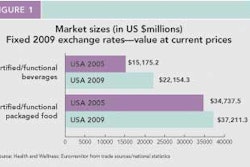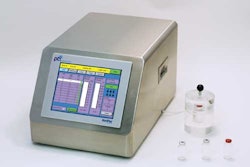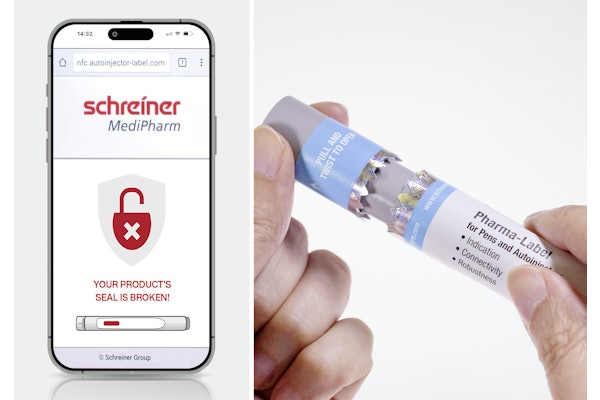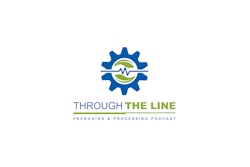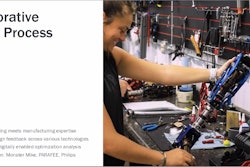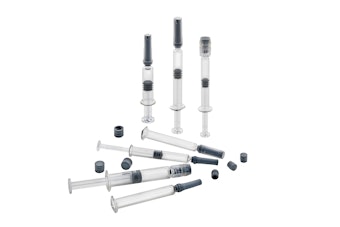I have fond recollections of talking with her about family, the good old days, bringing her coffee and cookies, and taking her for walks in the nearby neighborhood.
Another memory that stands out for me is watching nursing home employees pushing the “medicine cart” up and down the hallways within the nursing home. Equipped with a list of patients, their prescriptions, and room numbers, the worker would dispense pills from bottles into a disposable paper cup, walk into each room, and give each patient their meds. If that wasn't challenging enough, the nursing home staffer then might be interrupted with a task from another employee or a “request” from a resident or guest, posing ample opportunities for error.
Bulk bottles of medications, be they for prescription or OTC sales, remain a tried-and-true package for pharmaceuticals. And in tight economic times, increasing processing and packaging line efficiency and managing costs is imperative for manufacturers. Since that's unlikely to change, it's understandable that companies continue to rely on existing, high-production packaging lines.
Proponents of compliance-prompting or unit-dose packaging continue to tout this option, which has been more popular in other parts of the globe, such as in Europe. At the Healthcare Compliance Packaging Council's early-May Symposium, Amerisource Bergen's Walter Berghahn, also HCPC's chairman of the board, said he believes that healthcare reform may prove to be the “tipping point” in removing cost as the main driver slowing more widespread use of compliance-prompting packaging (CPP). The thinking is that as healthcare reform begins to take shape, physicians, pharmacists, and hospitals will make money by making people healthier and improving patient health outcomes, which CPP advocates say such packaging does.
That same “tipping-point” phrase was used by Peter Mayberry, then HCPC's executive director, in a 2009 Healthcare Packaging article in which he suggested that the $4 prescription packaging used by Walmart and other retail pharmacies could push the use of unit-dose packaging in
the U.S.
Companies will make packaging choices based on multiple factors, perhaps emphasizing economics. But patient safety must trump all decisions. Employing packaging that can help reduce death and illness due to medication errors will ultimately reduce healthcare system costs.
At the HCPC Symposium, Anderson Packaging, an Amerisource Bergen company, was honored for compliance-prompting packages, including the Toviaz™ Physician Sample Package for Pfizer Pharmaceuticals, as reported on page 18. Anderson's Justin Schroeder pointed out that health outcome benefits outweigh simple package-versus-package cost comparisons, noting that CPP also offers manufacturers product differentiation and uniqueness.
Of course, there are other vantage points, such as the May 10 BNET pharma blog, “$500M Verdict Against Teva Exposes Drug Industry Secret: Dose Packaging Manipulation,” in which author Jim Edwards wrote the following:
“The $500 million verdict against Teva and Baxter, favoring a patient who was infected with hepatitis after vials of the anesthetic Propofol were used twice, says more about the way companies sometimes manipulate drug packaging sizes than it does about jackpot juries.
“The case is a warning to managers: Patients and consumers are often as interested in the packaging of a product as they are its contents. While this case is an extreme one, packaging manipulations—from unopenable clamshells to wasteful boxes full of inserts and filler—are among consumers' biggest gripes. In the drug business, the manipulation of packaging and dose sizes is big business, and this case suggests consumers are finally figuring
that out.”
What does this all mean to you as a packager of pharmaceuticals? Give me your perspective at [email protected].
Another memory that stands out for me is watching nursing home employees pushing the “medicine cart” up and down the hallways within the nursing home. Equipped with a list of patients, their prescriptions, and room numbers, the worker would dispense pills from bottles into a disposable paper cup, walk into each room, and give each patient their meds. If that wasn't challenging enough, the nursing home staffer then might be interrupted with a task from another employee or a “request” from a resident or guest, posing ample opportunities for error.
Bulk bottles of medications, be they for prescription or OTC sales, remain a tried-and-true package for pharmaceuticals. And in tight economic times, increasing processing and packaging line efficiency and managing costs is imperative for manufacturers. Since that's unlikely to change, it's understandable that companies continue to rely on existing, high-production packaging lines.
Proponents of compliance-prompting or unit-dose packaging continue to tout this option, which has been more popular in other parts of the globe, such as in Europe. At the Healthcare Compliance Packaging Council's early-May Symposium, Amerisource Bergen's Walter Berghahn, also HCPC's chairman of the board, said he believes that healthcare reform may prove to be the “tipping point” in removing cost as the main driver slowing more widespread use of compliance-prompting packaging (CPP). The thinking is that as healthcare reform begins to take shape, physicians, pharmacists, and hospitals will make money by making people healthier and improving patient health outcomes, which CPP advocates say such packaging does.
That same “tipping-point” phrase was used by Peter Mayberry, then HCPC's executive director, in a 2009 Healthcare Packaging article in which he suggested that the $4 prescription packaging used by Walmart and other retail pharmacies could push the use of unit-dose packaging in
the U.S.
Companies will make packaging choices based on multiple factors, perhaps emphasizing economics. But patient safety must trump all decisions. Employing packaging that can help reduce death and illness due to medication errors will ultimately reduce healthcare system costs.
At the HCPC Symposium, Anderson Packaging, an Amerisource Bergen company, was honored for compliance-prompting packages, including the Toviaz™ Physician Sample Package for Pfizer Pharmaceuticals, as reported on page 18. Anderson's Justin Schroeder pointed out that health outcome benefits outweigh simple package-versus-package cost comparisons, noting that CPP also offers manufacturers product differentiation and uniqueness.
Of course, there are other vantage points, such as the May 10 BNET pharma blog, “$500M Verdict Against Teva Exposes Drug Industry Secret: Dose Packaging Manipulation,” in which author Jim Edwards wrote the following:
“The $500 million verdict against Teva and Baxter, favoring a patient who was infected with hepatitis after vials of the anesthetic Propofol were used twice, says more about the way companies sometimes manipulate drug packaging sizes than it does about jackpot juries.
“The case is a warning to managers: Patients and consumers are often as interested in the packaging of a product as they are its contents. While this case is an extreme one, packaging manipulations—from unopenable clamshells to wasteful boxes full of inserts and filler—are among consumers' biggest gripes. In the drug business, the manipulation of packaging and dose sizes is big business, and this case suggests consumers are finally figuring
that out.”
What does this all mean to you as a packager of pharmaceuticals? Give me your perspective at [email protected].



